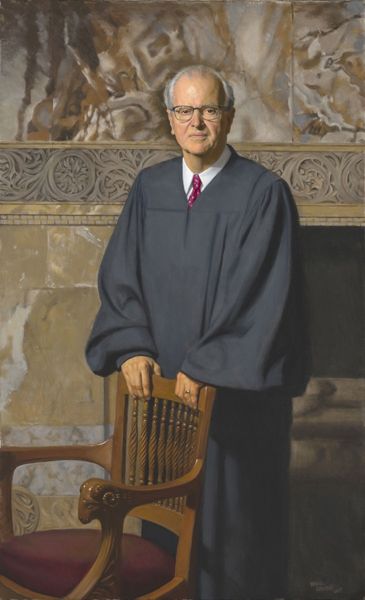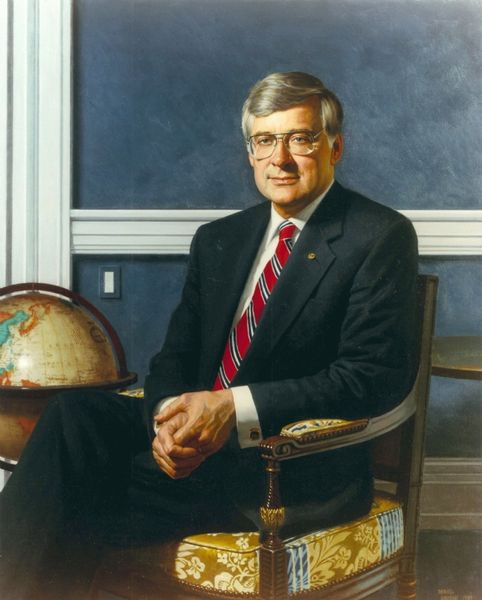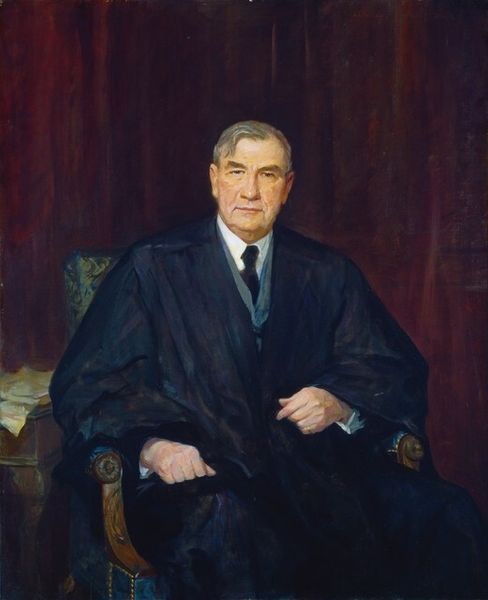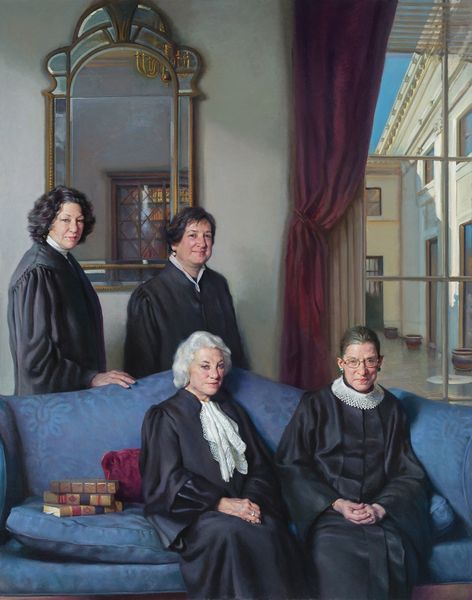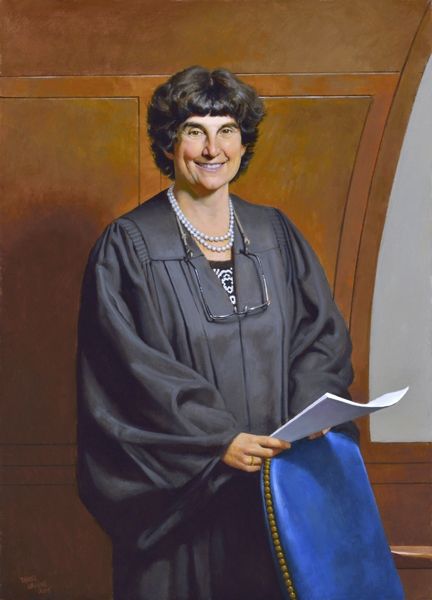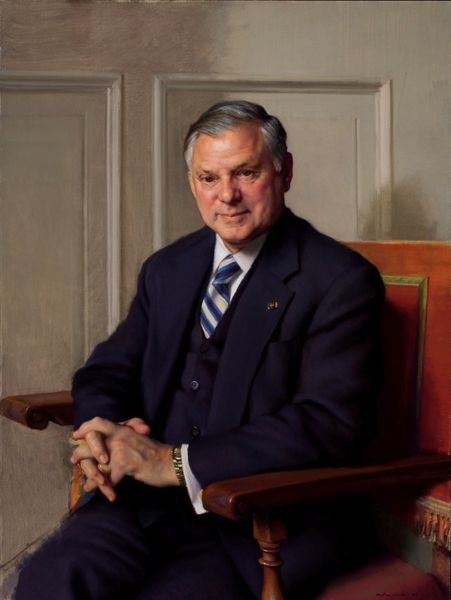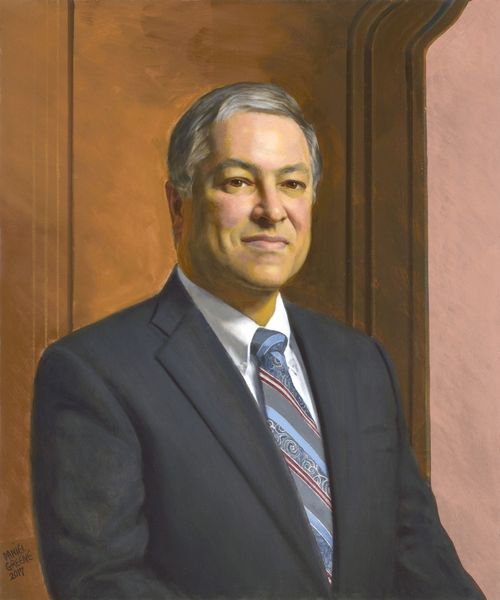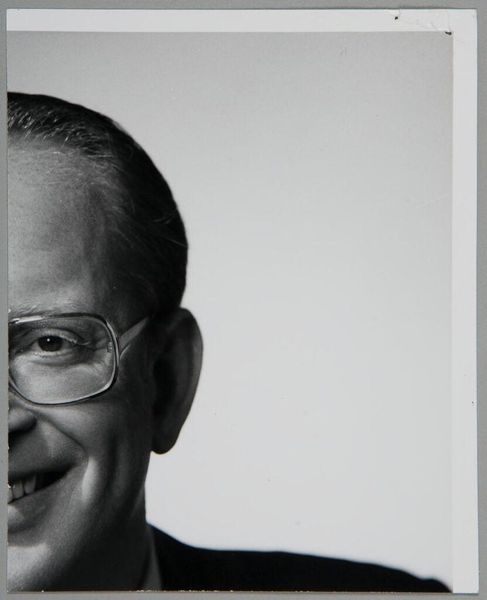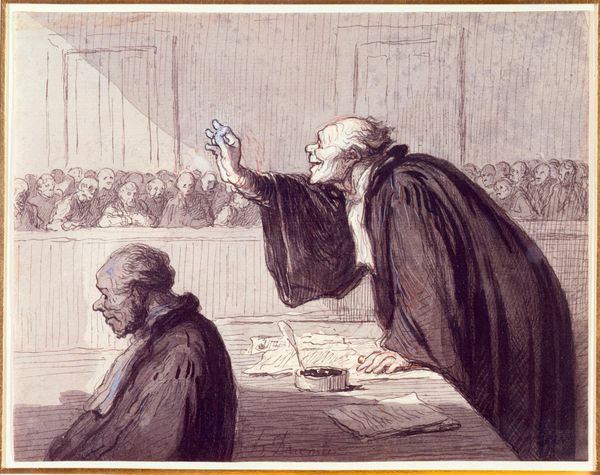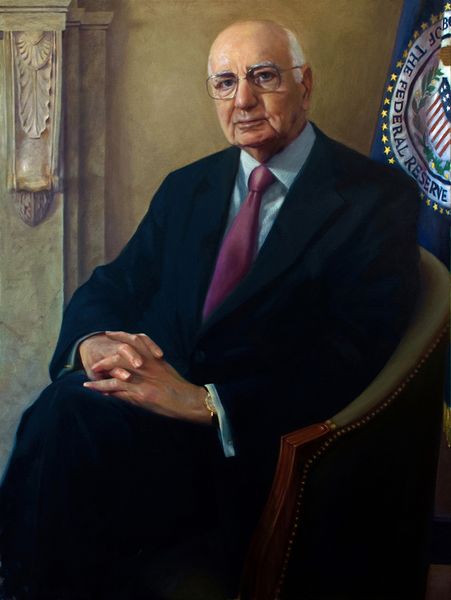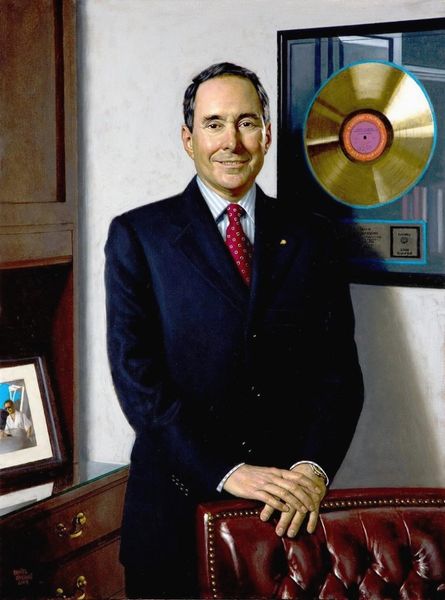
#
portrait
#
portrait
#
academic-art
#
realism
Copyright: Modern Artists: Artvee
Curator: Here we have Nelson Shanks' 2007 portrait of Justice Antonin Scalia. The work presents the Justice seated, adorned in his judicial robe. Editor: It’s striking how ordinary he looks despite the formality. Almost like he's about to get up and head to chambers to consult on a legal brief. There is such meticulous attention to the materials. Curator: Indeed. Let's consider the setting. The portrait provides us insight into Scalia's professional and personal world. Consider his legal texts on the desk as crucial props indicating status. It is academic art steeped in realism that serves to legitimize power through a visual representation of authority. Shanks' choice of classical style aligns Scalia with a certain historical lineage of jurisprudence. The composition itself, though conventional for a portrait, speaks volumes. Editor: And yet, while classical, I’d argue the oil paint isn't just window dressing; it actively performs and communicates class. Consider the production of portraits historically, where oil paints allowed for luminosity that could be easily replicated with pastels or frescoes. The craftsmanship indicates a certain level of skill and resources. We must acknowledge that its materiality is fundamental to its status and its reading. Curator: Absolutely, it also signifies how such visual representations can perpetuate and solidify ideological narratives. It reinforces notions of tradition, order, and perhaps even conservatism, aligning the sitter with those concepts. How does this work reinforce certain perspectives, perhaps at the expense of others? Editor: This perspective encourages a deep dive into the choices involved in this kind of artwork, particularly when such material manifestations so often shape historical consciousness and political viewpoints. By thinking through the tangible processes of such a portrait, we open up richer conversations about history and materiality, hopefully breaking some assumptions in the process. Curator: Viewing Shank’s work is essential for thinking through issues surrounding justice, and social values that shape our world today. Editor: I'll agree with that conclusion. Thinking materially opens onto important perspectives and conversations.
Comments
No comments
Be the first to comment and join the conversation on the ultimate creative platform.
